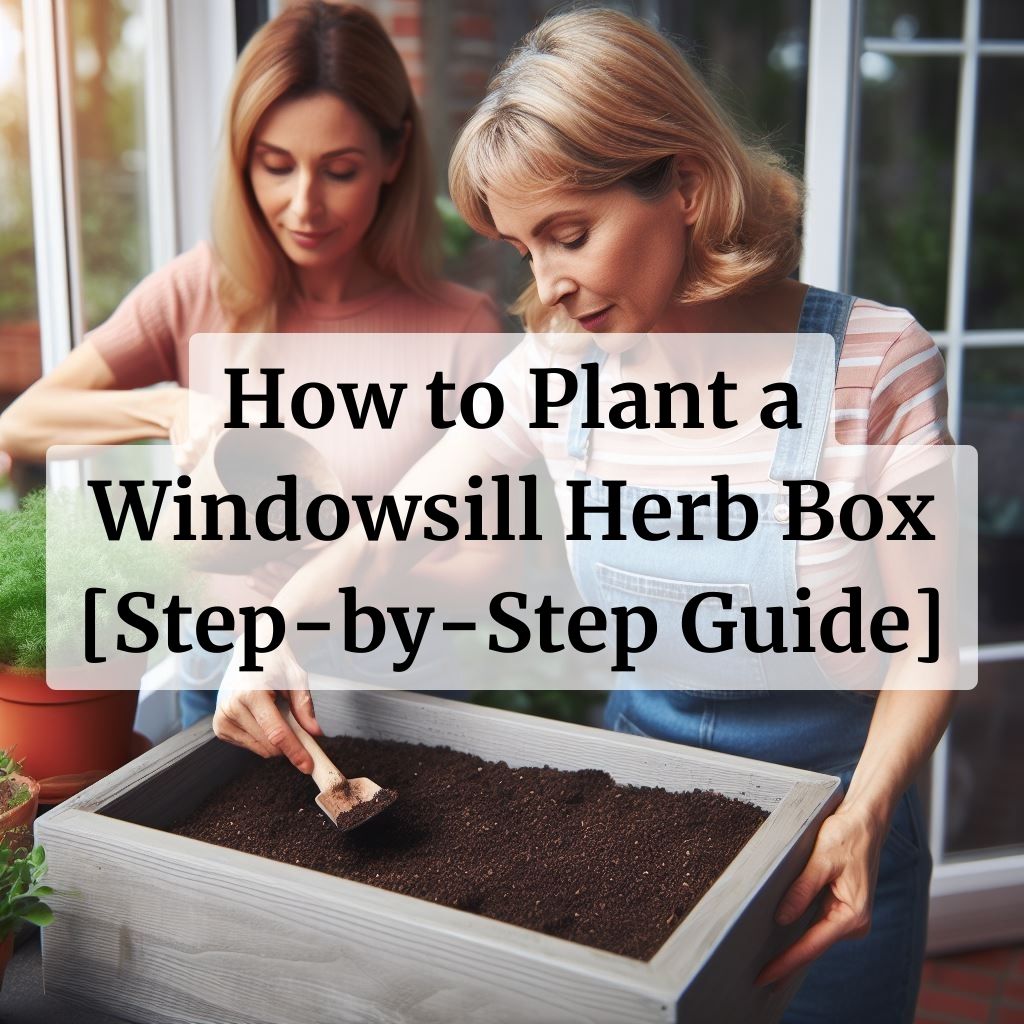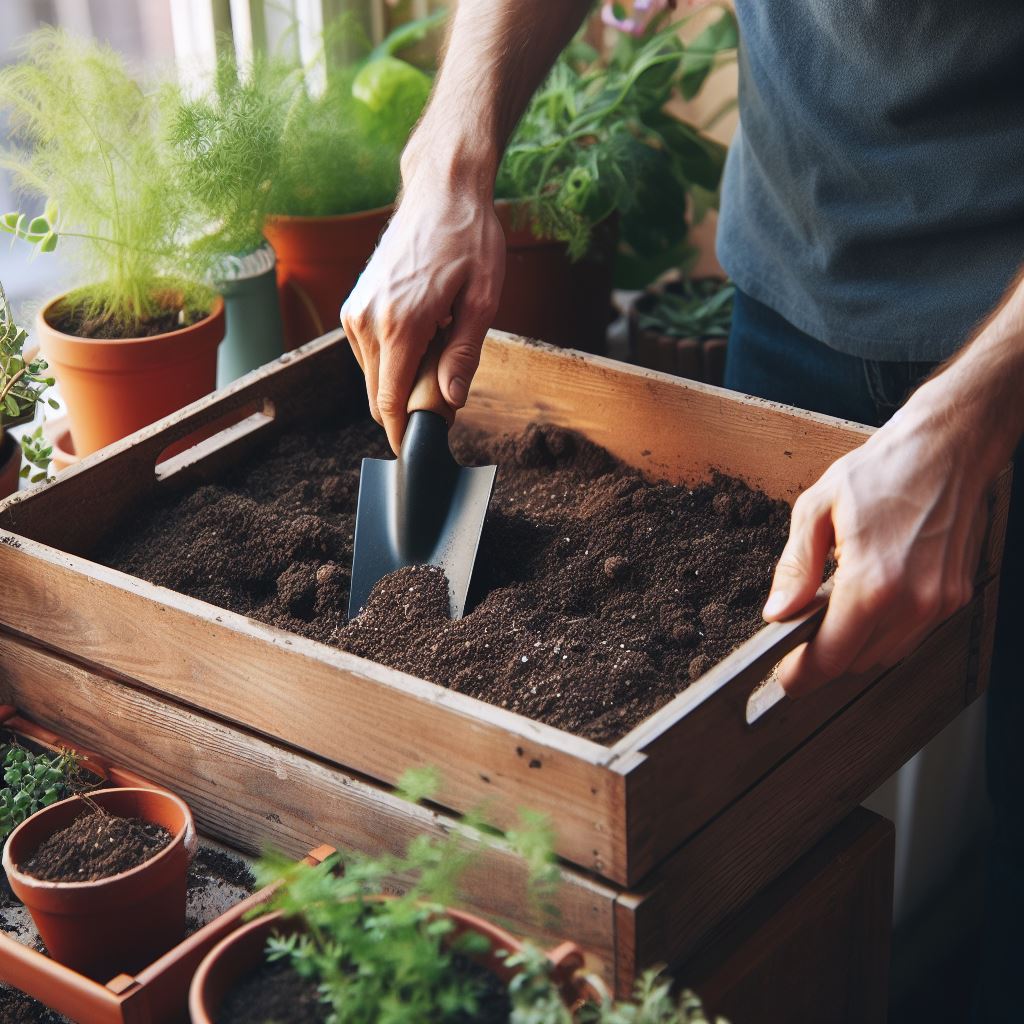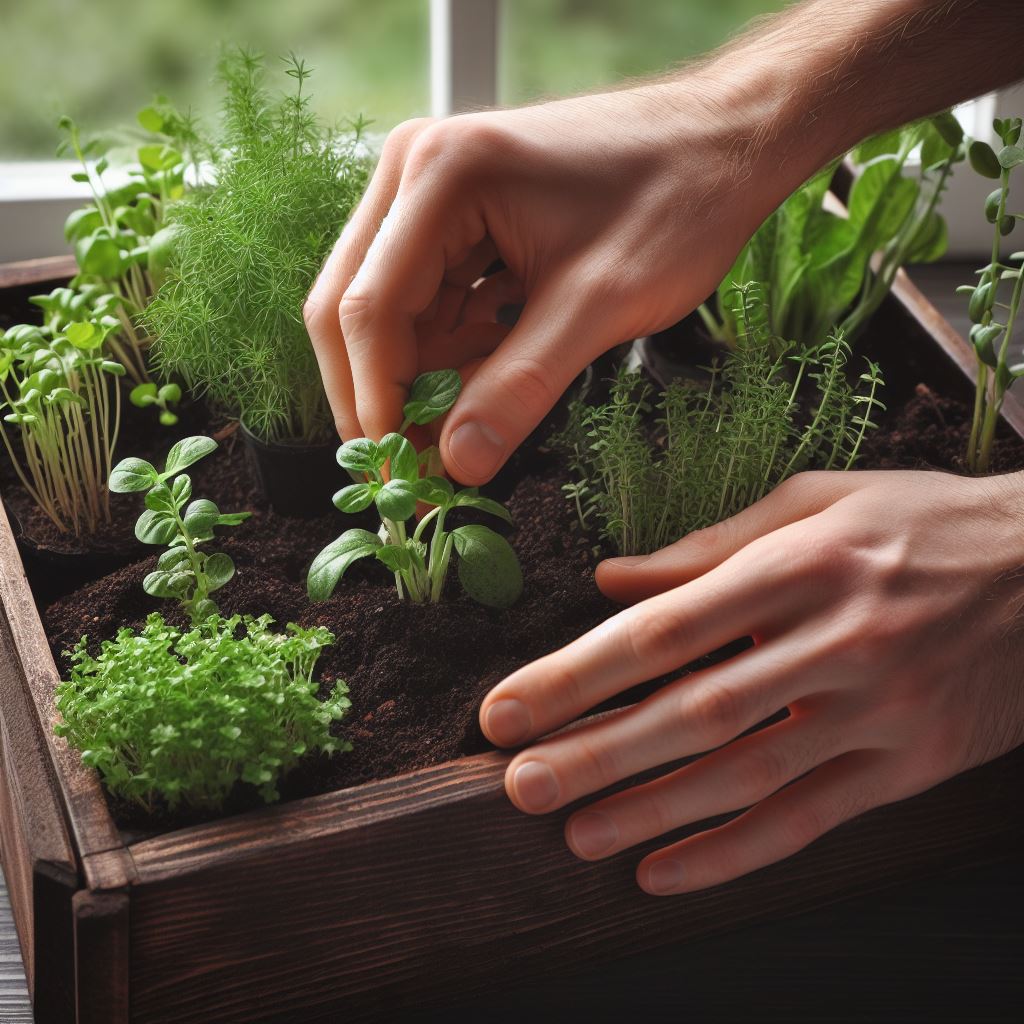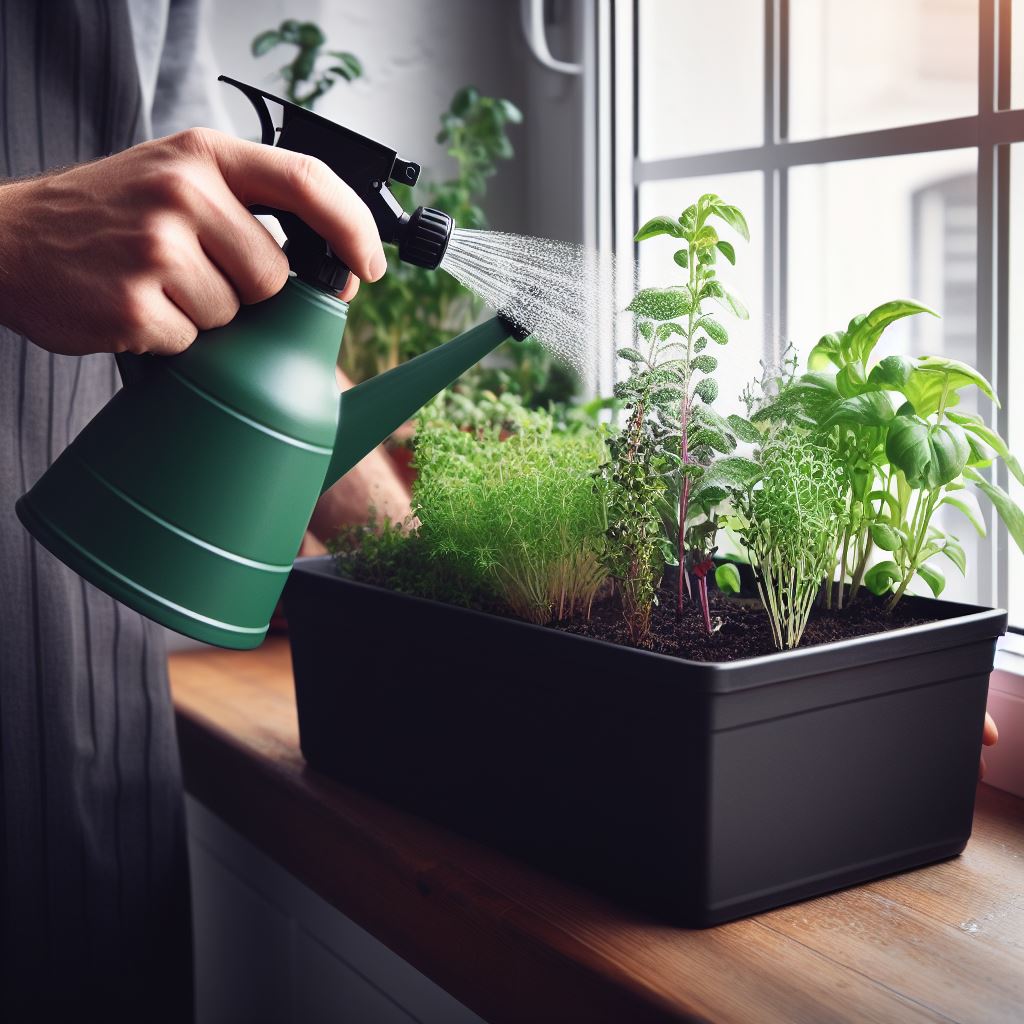
Here are the exact steps you need to take to start growing your own windowsill herb box.
In this article
Step 1: Fill the Container with Potting Mix

Fill your window box halfway with herb potting mix and gently position the herbs (still in their pots) to gauge the final planting height, which should leave about 3cm from the brim. No necessity for adding stones or gravel at the base since this could obstruct the drainage outlets.
Step 2: Gently Extract the Seedling from the Store-bought Container

Gently extract the sweet basil from its pot by compressing the sides and then inverting the pot (while guarding the plant with your fingers) to allow the root ball to slip out naturally. Avoid pulling the plant out, as it could harm the delicate roots.
Step 3: Replant the Seedling into the Container

Place the other herbs and the red leaf lettuce into the container by removing them from their pots and arranging them within the planter. Position low-growing herbs like mint and nasturtium along the outer edges to allow them to cascade over the sides.
Step 4: Top Up the Soil and Gently Water the Plants

Once the herbs are in place, top up the container with potting soil, ensuring the plants sit at the same depth as they did in their original pots. Firmly pack the soil around the herbs and gently water to settle the earth.
Useful Tips:
Most compact herbs such as thyme, oregano, sage, and even rosemary possess shallow root systems that are ideal for a windowsill box. Opt for a container that has a minimum depth of 15cm, avoiding shallower ones that may struggle to retain sufficient moisture, particularly on scorching days.
In case you’re using a terracotta container, soak it in water for a day prior to planting. Terracotta can act like a sponge, absorbing moisture from the potting medium. However, by saturating it beforehand, the pot will not take away moisture, ensuring the soil remains adequately moist.
Before planting, water all the herbs in their original pots or bags. This eases the process of removing the herbs from their containers, reduces transplant shock, and minimizes resistance when transitioning to a new growing medium.
Utilize a high-quality herb potting mixture and include a controlled-release fertilizer in the potting soil for a gradual and consistent nutrient supply.
Making the Most of Herbs from Your Herb Garden
Sweet Basil: Incorporate fresh basil leaves in salads and dressings or use them to infuse flavor into tomato-based sauces, vegetables, cheese, egg dishes, and various meats, adding them towards the end of the cooking process. Basil tea can enhance digestion and serve as a mild mood-lifter.
Chives: Snip chives into salads and various dishes featuring vegetables, cheese, eggs, and meats as a tasteful garnish. They can also be a delightful addition to salad dressings.
Italian Parsley: This versatile herb finds its place in salads, dressings, and sauces. Chop it finely and add it towards the conclusion of slow-cooked meat and poultry dishes. Italian parsley is notably nutritious, rich in vitamin C. It can also be brewed into parsley tea to aid digestion and offer a revitalizing tonic.
Mint: Add mint to salads, desserts, and refreshing beverages. It also doubles as a digestive tea when consumed after a meal. Mint is known for its fatigue-lifting qualities and its appetite-stimulating effects.
Nasturtium: The edible flowers and leaves of nasturtium have a zesty, peppery flavor. They can be included in salads, sandwiches, egg dishes, herb dips, herb-infused vinegars, vegetable preparations, and desserts.
READ MORE: 8 Herbs That Grow Well in Pots
Window boxes brimming with herbs are not limited to adorning windows; they can serve as decorative elements in various settings, including as charming table centerpieces.
Happy gardening!







